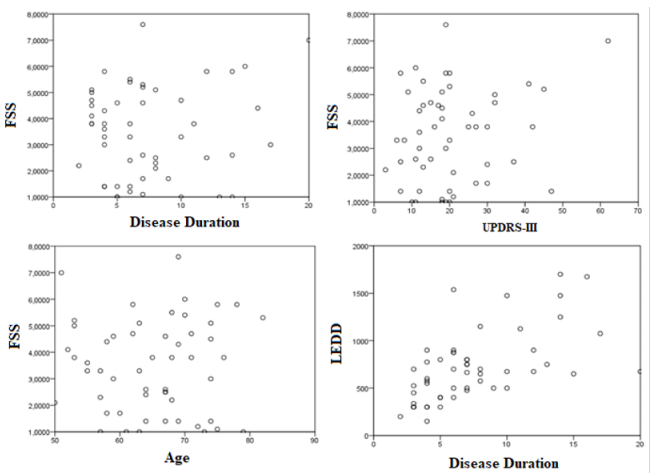ABSTRACT.
Fatigue is a non-motor symptom of high prevalence in Parkinson’s disease (PD); however, it is still unknown and neglected by health professionals.
Objective:
This study aimed to demonstrate the prevalence of fatigue in patients with PD after excluding confounding factors, as well as its correlation with clinical and demographic data, and to find its negative impact on the quality of life of these patients.
Methods:
A cross-sectional study was carried out with 237 randomly selected patients. According to inclusion and exclusion criteria, we selected 53 patients, who were then submitted to the Fatigue Severity Scale. Clinical and demographic data were also analyzed, comparing them between patients with and without fatigue.
Results:
We identified fatigue in 21 (39.62%) patients. Patients with and without fatigue had similar mean scores on the UPDRS-III (p=0.36), equivalent daily dose of levodopa (p=0.94), mean disease duration (p=0.43), and mean age (p<0.99). Fatigued patients had worse quality of life scores (PDQ-39) (p=0.00). We did not observe a correlation between fatigue, duration of illness (r=0.11; p=0.43), age (r=0.00; p=0.99), and UPDRS-III (r=0.20; p=0.16).
Conclusions:
Fatigue is a highly prevalent and independent symptom of PD. There is no correlation between age, mean duration of disease, motor impairment, and its presence. It has a negative impact on quality of life.
Keywords:
Depression; Disorders of Excessive Somnolence; Fatigue; Parkinson Disease

 Thumbnail
Thumbnail
 Thumbnail
Thumbnail

